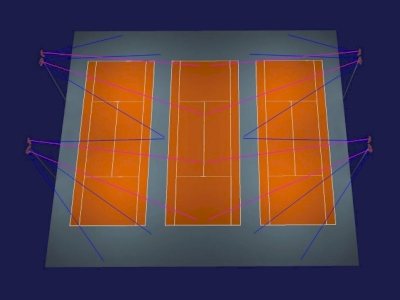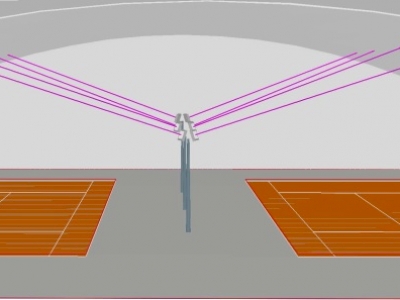The lighting system is more than just lighting the playground, so when designing and installing it, it is necessary to take care of the spectators, so that they feel comfortable, and, if necessary, to provide lighting for a successful and high-quality television broadcast. However, even beyond those simple imperatives, sports lighting is a complex business.
Considering the popularity of the sport of tennis and the number of playgrounds, the need for lighting tennis courts is great, and we are also aware of the fact that there are big differences in the quality of installed lighting - from examples of good practice to lighting that does not meet basic standards.
The main goal in designing and planning the lighting is to provide the players with good visibility of the tennis ball on all parts of the playing field, and to enable the spectators to follow the game. However, the size, color and speed of the ball require strict compliance with lighting standards, i.e. achieving the required level of average illumination, lighting uniformity, light color and contrast. Good tennis court lighting should illuminate the entire court, including approximately 1.5m from the sideline and approximately 4m behind the baseline. In order to satisfy this, the optics of the reflector play a key role.
Metal halide lamps are the most common sources used in the lighting of tennis courts, however, reflectors with LED technology are increasingly developed and adapted to needs, thus becoming more interesting due to their efficiency, low maintenance costs, availability of different optical systems and increasingly competitive prices.
Asymmetric full cut-off reflectors are the best option that allow meeting all parameters of the norm with excellent glare control. An adequately selected reflector also enables use both in the open field and inside the balloon. In other words, it can be used on poles during the summer season for direct lighting, and if necessary it can be transferred and mounted for indirect lighting inside the balloon.


